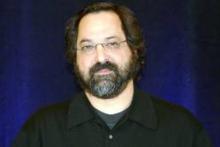MINNEAPOLIS – Suicide may be more likely after midnight and in particular between 2 a.m. and 3 a.m., according to new research.
"This appears to be the first data to suggest that circadian factors may contribute to suicidality, and help explain why insomnia is also a risk factor for suicidal ideation and behavior," said Michael L. Perlis, Ph.D., of the department of psychiatry and director of the Penn behavioral sleep medicine program at the University of Pennsylvania, Philadelphia.
Dr. Perlis said that it has long been known that insomnia may lead to a certain despair; he found a reference to it in the Lancet in 1914. The anecdotal report said, "The rector of a parish having written the following letter, was found dead in a pool with a bullet wound in the head: ‘Another sleepless night; no real sleep for weeks. Oh, my poor brain, I cannot bear the lengthy, dark hours of the night.’ "
Previous studies have shown that completed suicides rise starting in the morning, and then peak in the afternoon, with trends being lowest from midnight to 4 a.m., Dr. Perlis said at the annual meeting of the Associated Professional Sleep Societies.
He and his colleagues at Penn and the Philadelphia Veteran Affairs Medical Center, also in Philadelphia, decided to take a different look at the data – instead of arraying completed suicides as a percent per hour, they examined the odds of completed suicide by clock hour, accounting for the proportion of the population awake at each hour.
They hypothesized that people with insomnia may be at higher risk for suicidal ideation and behavior because of their chaotic and dysfunctional thoughts and nightmares, in which small problems appear much larger. Further, people who are depressed and suicidal also have higher rates of insomnia.
They looked at 35,332 suicides reported to the National Violent Death Reporting System at the Centers for Disease Control and Prevention. The data come from 18 states and was compiled from 2002 to 2010. The reports included the time of the fatal injury.
A total of 81% (28,704) of the suicides were in men and 84% (29,771) were in non-Hispanic whites. Suicide was highest among 35-44-year-olds and 45-54-year-olds, at about 20% for each age group.
The researchers used existing data on the number of Americans awake at any given hour and plotted the suicides by 1-hour increments.
At 7 a.m., the mean suicide rate was just under 2%. But at midnight, it was 8.3%; at 2 a.m., it was 16%, and at 3 a.m. it was 15%. Rates continued to drop from there, to a little over 2% at 6 a.m.
"Frankly, it makes all the sense in the world that completed suicides would occur more frequently at night," Dr. Perlis said in an interview. At that time, there is an absence of social constraints and social supports, a despair that comes from sleeplessness and easier access to alcohol, substances, and weapons, he said. Impulse control also may be lower (Sleep 2014;vol.237:abstract supplement,abst. 0768)
It is also "likely that being awake at night, when one is biologically prepared to be asleep, may be a risk factor in and of itself," Dr. Perlis said.
As far as why suicides peaked between 2 a.m. and 3 a.m. in their study, Dr. Perlis said that it may be that it’s the time of day "where the pressure to sleep is greatest and as a result this is the time when executive function is most impaired."
Dr. Perlis said that the study, "suggests that interventions for insomnia and nightmares may serve to reduce the risk for completed suicide and likely will also reduce suicidal ideation and behavior."
Short term interventions can include medications and other medical strategies. But Dr. Perlis recommends cognitive-behavioral therapy that targets insomnia and nightmares for longer-term treatment. The Philadelphia Veterans Affairs began system-wide training in CBT for insomnia and nightmares 4 years ago, he said.
The research was supported by the University of Pennsylvania and the National Institutes of Health. Dr. Perlis and his colleagues reported no conflicts.
On Twitter @aliciaault


